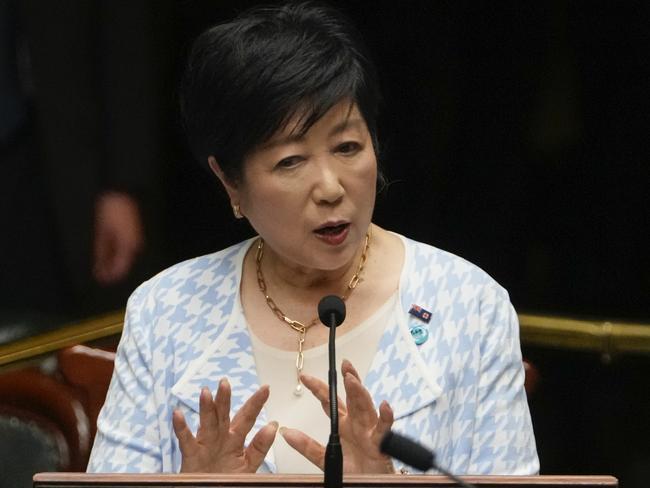‘Longstanding issue’: Japan’s huge four-day week change begins in April
A country’s major work week experiment is set to kick off in a matter of days, with the “extraordinary” new measures coming into effect.
Business
Don't miss out on the headlines from Business. Followed categories will be added to My News.
In a matter of days a radical four-day work week experiment will kick off in Japan in a desperate bid to reverse the country’s rapidly declining birthrate.
From April 1, amended laws will come into effect requiring companies to offer flexible work options for employees with young children, such as reduced working hours and remote work.
The Japanese government first officially endorsed the idea of a four-day week in 2021, offering free consulting and grants to motivate businesses to help employees achieve a better work-life balance.
However, uptake was slow and, up until very recently, only eight per cent of companies offered the option of a three-day weekend.
In order to influence a more widespread change, the Japanese parliament passed changes to several laws, expanding flexible work entitlements.
As a result, the Tokyo Metropolitan Government, one of the country’s largest employers, announced it would be introducing a four-day work week, with the change to start from next week.
“We will continue to review work styles flexibly to ensure that women do not have to sacrifice their careers due to life events such as childbirth or child-rearing,” Governor of Tokyo, Yuriko Koike, said at the time of the announcement.
“Empowering women, a goal that has lagged far behind the rest of the world, has been a longstanding issue in our country”.

Currently, the Tokyo government uses a flexitime system that allows employees to add an extra day off every four weeks.
This will increase so staff can add an extra day off per week, allowing them to work a four-day week.
Not for profit organisation 4 Day Week Global, which has been campaigning for the change worldwide, described the move as “extraordinary”, particularly in a country where working long hours with little reprieve has, for a long time, been the norm.
“Productivity goes up, the ability to attract and retain staff improves, and sick days broadly halve,” founder Charlotte Lockhart told the Financial Times.
“The benefits become quite material, and this is something that transcends borders.”
The increasing pressure from the government to allow more flexibility for working parents comes amid growing concerns over Japan’s ageing population.
In 2024, the country saw its ninth straight year of birthrate decline, with the number of babies born falling to a record low of 720,988.
Births were down by five per cent and the 1.62 million deaths that occurred that year meant that, for every new baby born, more than two people died.
Australia also has an ageing population.
Last year nearly 18 per cent of the country’s total populated was aged 65 and above. This is expected to increase to 22 per cent by 2044.
Our birthrate has also been steadily declining, dropping to 1.5 children per woman in 2023, the lowest since 1935.
However, according to Swinburne’s Associate Professor, John Hopkins, we aren’t likely to see our government take a similar flexible work approach in order to reverse it.
“The declining birthrate in Japan is an extreme case, and their government there is hoping a 4-day week will enable more women to combine having a career with having a family,” he told news.com.au.
“The situation is Australia is very different, and I don’t see this issue as being a key driver for the adoption of the four-day week here.”

However, that doesn’t mean the four-day work week argument isn’t gaining traction over here.
In the past few years there has been a sharp rise in companies adopting the new working model, with Medibank and Bunnings among the major Aussie brands that have begun trialling the change.
Professor Hopkins believes that this is a trend we can expect to see continue to rise throughout 2025, both here and overseas.
“Many companies who have tried it have experienced some great results – significant improvements in recruitment and retention, lower absenteeism, and even increased productivity – which will no doubt encourage other firms to try it and see if they can achieve similar gains.”
This is also backed up by data, with recent research from recruiter Robert Half revealing just over a third of Australian companies surveyed expect their organisation will transition to a four-day work week within the next five years.
One of the common ways that companies implement a four-day week is by using the 100:80:100 model, in which staff keep 100 per cent of their pay but have their work hours reduced to 80 per cent.
However, they must maintain 100 per cent of their productivity in order for the change to work.
Other options include allowing staff to work a shorter week but for less pay, or offering standard 40 hour weeks condensed over four days.
Professor Hopkins also pointed out that the way we work has changed drastically over the years, so it makes sense that the way we structure our work week should change too.
“It’s been 100 years since Ford in the US moved to the world’s first 5-day week, at a time when the average life expectancy of workers was 51, and only one in five workers were women,” he said.
“The technological breakthroughs of the past century have actually led us to working longer hours now than we did back then, so I think it was inevitable that this conversation would happen around reducing work hours for workers.”
Originally published as ‘Longstanding issue’: Japan’s huge four-day week change begins in April





